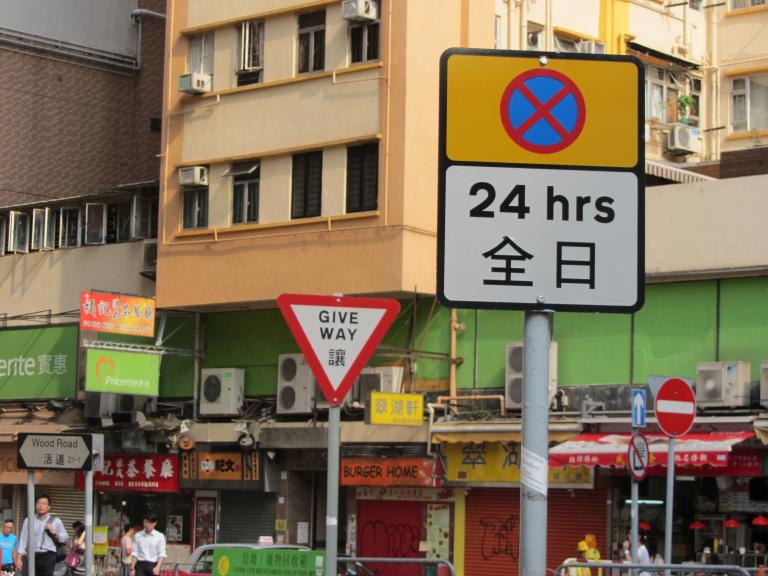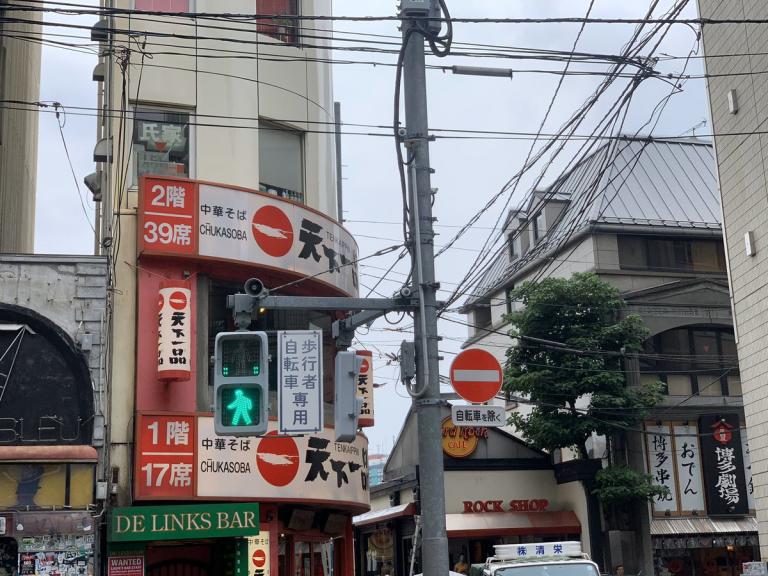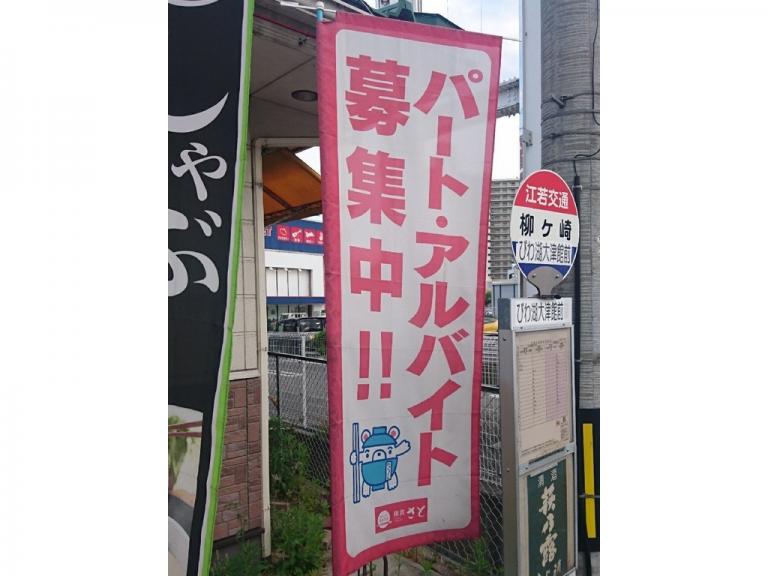Shop signs and huangzi
8 min readAncient merchants of China included itinerant traders and shop keepers for different forms of business operations therefore there were two different forms of advertisement: peddling and signs and huangzi. Peddling was in two forms: shouting and making sound with wares. Itinerant traders sold their goods mainly by going along streets and through lanes while shouting, as shouting was waste of breath and could only be heard nearby, “audio advertisement”emerged as needed. Itinerant traders used different wares to produce different sounds by rocking, beating and blowing, to represent different trades. Signs and huangzi were directly linked with shop keepers. Shop keepers sold their commodities at fixed places, the things in kind on display seemed monotonous and not quite attractive to customer, and also, to build up the image of brands, therefore colorful signs and huangzi with diversified forms and patterns were produced. Signs were mostly made with wooden plates, rectangular in shape, with characters written on them, and they varied mainly in size, the number and font of characters and the way they were hung up; huangzi, as the sign of trade, showed the goods on sale or service items mainly as image. Before the Song Dynasty, signs and huangzi were mainly used by restaurants and tea houses. They were widely used in the Song Dynasty, drug stores, garment stores, pawnshops, plaster stores, inns and cigarette stores all used them for advertisement purpose. There was not only cloth huangzi, but also wooden huangzi, similar to the advertisement plates at the store gates today. Zhang Zeduan’s Riverside Scene at Qingming Festival presents the true forms of signs and huangzi in the Song Dynasty. In the Ming and Qing Dynasties, with the daily flourishing commerce on marketplaces, signs and huangzi developed into the mature stage. The news pictures and advertisement pictures and articles in Dianshizhai Pictorial published in Shanghai during late Qing vividly present the shop layout and shapes of signs and huangzi in area south to the Yangtze River. The China Industry and Commerce Craft Union published in Harbin in early 20century were attached with nearly 100 signs and huangzi patterns for industries and commerce drawn by Zhou Peichun, painter in Beijing, and they should be formalized signs for various trades.

Signs and huangzi are in diversified forms and rich materials, but they only have 8 basic elements. They include the body (the main body of the huangzi), the high post standing on the ground outside the shop, the support to hang things in kind or models on it, the ledger fixed on the post or under the eave of the shop, the crown, the hanging ropes, rings or chains connecting the ledger with the crown, the base, and the decorations on the base or body.
Signs and huangzi could be classified into three categories: images, symbols and characters. Image signs and huangzi were made with physical commodities, models or patterns. Those made with physical commoditie are intuitive and low in cost,the selected things should be convenient for display, and not damaged for long time display. For example, clothes shops put up clothes and gowns right at the shop gate; shoe sole mills would hang a string of soles with decorations at lower end at the gate; and mat shops would build a square stand outside the shop, with a wooden stick in the middle to hold a rolled-up mat. Some commodities could not be displayed directly, and were made into certain patterns for display, for example, a cotton shop would make oblate cotton balls, with a red ribbon tied in the middle, and such balls were then hung in strings of three or in cross pattern. Model huangzi evolved from physical ones. Some physical articles could not be put outdoor for long, such as perishable food and drug, vulnerable ceramic articles, and heavy or tiny articles such as iron tools, paper, cigarette and needles, as well as valuable gold and silver jewelry, could not be used as huangzi directly. Therefore, durable light materials were used to make models of appropriate sizes in place of things in kind. For example, a pork shop would put two pieces of wood together, one in red and the other white, to represent raw pork; and needle shop would hang five needle-shaped wooden sticks at the huangzi support, on both sides of the shop gate in a symmetric pattern. Cigarette shops would plot cigarette pack and tobacco leaves on cloth or wooden plate, to clearly show what were sold. In some cases, to enhanc the visual effect, things in kind were made into models much bigger than the true size, for example, a shoe shop would hang huge models of shoes or boots, making people unforgettable. Huangzi in pictures demonstrates commodities with pictures, mainly painted on wooden plates, cloth curtains or signboards. For example, huangzi for eye medicine has used eye as the huangzi picture since the 10 century; others such as hatteries, painting mounting shops and mills for imbue emerald jewelry often use picture huangzi, and sometimes characters were also used Symbol signs and huangzi used symbols related to commodities, and when established by usage after a long time, such symbols became logos of the trade. For example, silverware shops with model of crucible smelting silver, restaurants with banners or curtains about wine flying high, drug stores with calabash, small inns with ladles, and fairly big restaurants with round huangzi. Signs and huangzi can also tell if the store is exclusive or has sidelines, for example, a store with several strands of hemp is exclusive with hemp, while a store with only one strand of hemp operates with hemp as a sideline product. Signs and huangzi also tell the grade of stores, for example, big hotel has four huangzi. Character signs and huangzi are wooden plates or cloth curtains bearing the characters to indicate the commodities, hung in front of the store. It could be a single character or in combined form, the former is simple and easy to tell, for example, the character”当”(pawn)for pawnshop, and character”jiang”(sauce) for sauce and pickles shop; and the latter takes the shape and colors as the main identifier, added with corresponding characters, for example an oil basket shop at Chongwenmen Avenue in Beijing in late Qing had a physical oil basket hung up, with a character”” (oil)written on it. Character signs and huangzi were normally made with wooden plates in rectangular, square or calabash shape, painted black on both sides, and sometimes gilding was used for better visual effect. Character signs and huangzi were common for tea, cigarette, rice and wine. Sometimes, characters were added to model, picture and symbol huangzi to convey the commodity information more clearly, and also to make the huangzi more attractive to eyes. Some shops would use signs and huangzi in a number of forms for better effect.

Signs and huangzi were made mainly with such materials as paper, cloth, leather, bamboo, wood, aluminum, iron, copper and tin, and they were normally selected specifically according to the category, size and features of the shop and the commodities on sale. Signs and huangzi were often made with techniques of wooden engraving, embroidery, blacksmithing, copper forging and textile. Traditional forms of expression in China, such as characters, paintings and physical models, were often used in the pattern design and conception of signs and huangzi, so that they had thick folk colors and unique ethnic styles. People in different regions and of different ethnic groups usually used totem they worshipped as the main pattern and ornamentation on their signs and huangzi. For example, the Han people worship dragon, so the ledger for hanging the signs and huangzi is engraved into a dragon. Signs and huangzi were mostly made by folk artisans, so their shapes, colors, patterns and locations all have distinctive folk colors. The shapes vary in style with commodities, primitive, gorgeous or elegant, suiting both refined and popular tastes. Their colors are often bright red, yellow, blue, black and white, normally red or yellow symbolizing jubilance and auspice are used, and sometimes golden color is added to enhance the visual effect. Moreover, colors also tell the synchronous functions or nationalities of the shop, for example, red huangzi for Han restaurants, blue huangzi for Halal restaurants, and yellow dedicated for vegetarian restaurants. Decorations are often bats, twin fish and ganoderma that imply happiness, well-off and longevity, and clouds, dragon and Nyoi as auspicious signs. Furthermore, peach implies longevity, pomegranate symbolizes many children, and carp is homophonic to “profit”in Chinese; lotus flowers and leaves stand for continuous years, and therefore longevity; calabash implies immortals, so drug shops and wine shops use it as metonymy to immortal drug and wine.
Signs and huangzi are normally set up in a symmetric form, therefore, in most cases, there is one on the left side and one on the right of the shop, to achieve a balanced symmetric visual effect. To effectively bring into play the commercial advertisement function of signs and huangzi, usually specific forms of display are used depending on different needs. They can be fixed on a stone base, or hung under the eave, or plotted on walls, lintel or gate posts, or attached at the top of a long pole stretching into the street. The ledgers for hanging signs and huangzi are often made into dragon or bat, symbolizing soaring aloft with success and coming good fortune. In traditional Chinese society, people engaged in business normally quite revered the God of Wealth and shrines, statues and spirit tablets of their ancestors. Such reverence was also extended to signs and huangzi. To them, signs and huangzi symbolized “bringing in wealth and treasure”and “pouring-in profits, and were very important to them, therefore there were various taboos in using signs and huangzi. For example, when the signs and huangzi were hung up when the business was started every day, they must say “invite the huangzi,” and must never say “hang,” because the word “hang”was ominous to the merchants. It was also a taboo to have the signs and huangzi drop on the ground, if an apprentice accidentally dropped a sign or huangzi on the ground, it was believed that the God of Wealth was offended. From these, we can see the rich and colorful customs and folk styles behind the traditional crafts. Traditional merchants mostly followed the Confucian ideology that commercial activities must be based on business ethics and shop reputation. As images of shops, signs and huangzi naturally reflect the traditional Confucian culture. Characters suchas”ren,””yi,”de”and”xin”benevolence, righteousness, virtue and faith)are often included in the names of shops and engraved on the gate boards, such as “Tongrentang,” “Derentang, “”Zhengyide “and “Tongyixing,”demonstrating the principles of the Confucian merchants. Some names on shop signs both reflect the Confucian culture and imply prosperity of business, such as “Quanjude, “Renchang,” “Deshuncheng” and “Xiangdezhai.”
The marketing forms and gate decoration of shops are changing with the change of times and social and economic development. Traditional signs and huangzi have now basically exited from the mainstream of commercial field, and are used only by a small number of shops. Some people are still making and using traditional signs and huangzi, but they are no longer simply shop signs and advertisement, instead, they represent the heritage of an industrial spirit and folk culture, and more as the image expression of the marketing concept of the business.









